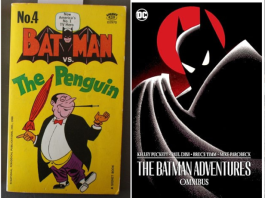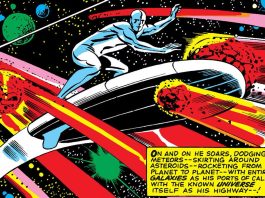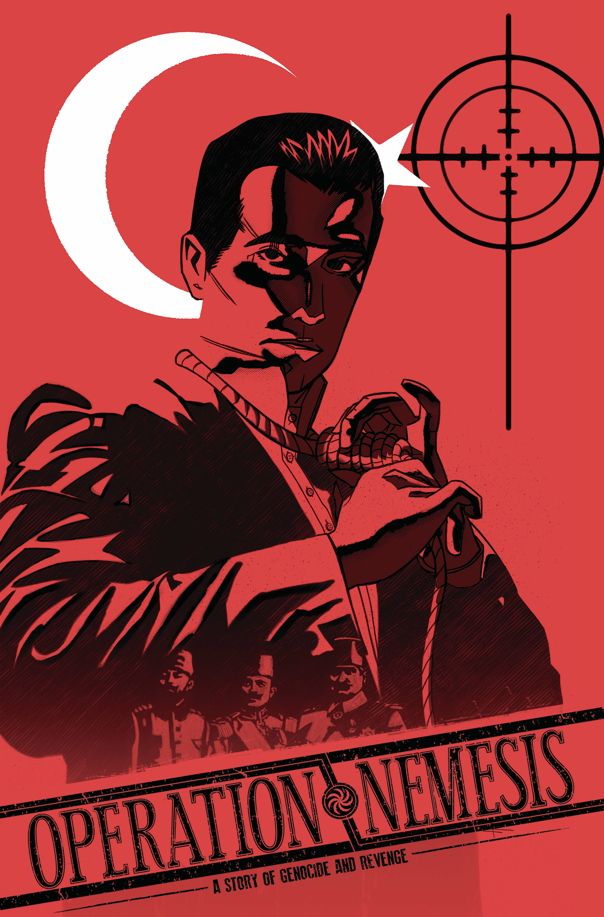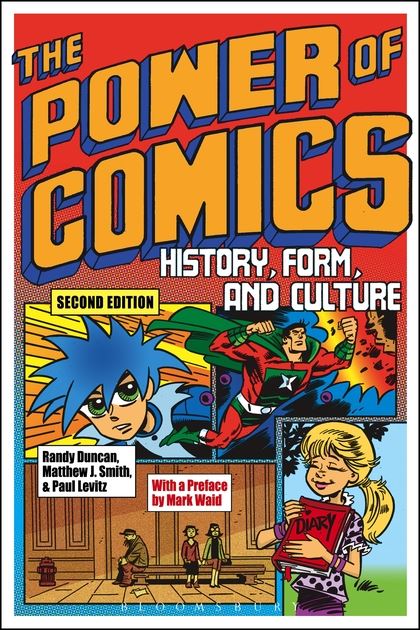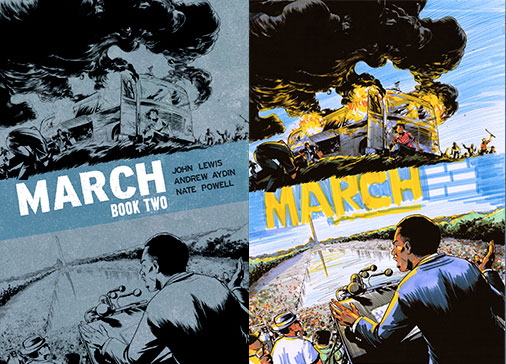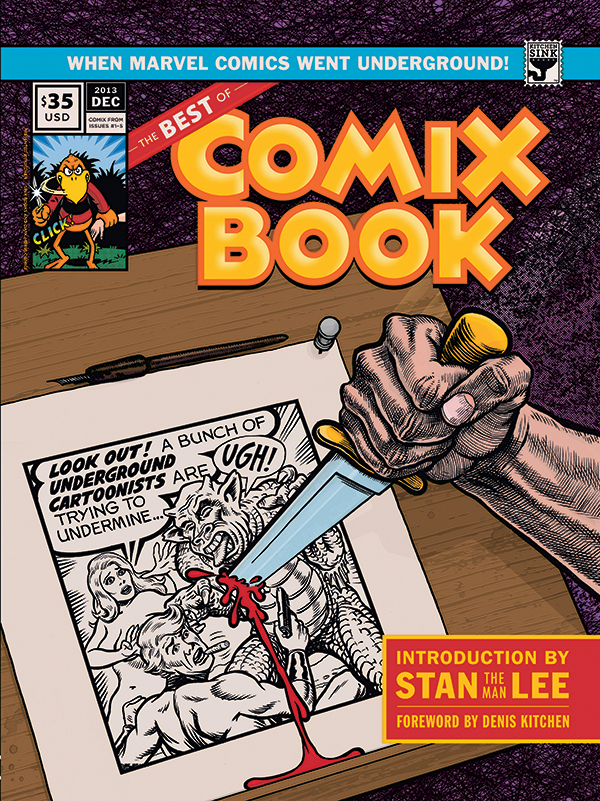Kickstarter alert: Comic Book People 2: Photographs from the 1990s by Jackie Estrada
Somehow I have neglected to mention until this moment that Jackie Estrada is crowdfunding a second book of photos taken at conventions over...
Devil’s Due explores the Armenian Genocide in OPERATION NEMESIS
Human history has a lot of dark moments....the Armenian genocide is one of them. Devil's Due has been around for a long time, and...
Hero History: The Paradoxical World of Harley Quinn
What makes Harley Quinn so popular? Abraham Riesman digs into her history to try to find answers.
The Power of Comics — Recharged
Randy Duncan and Matthew Smith have published a second edition of their essential textbook on the history and business of comics -- and this time, they're joined by a new author: Paul Levitz.
Michael Davis talks about why he’s not in Milestone 2.0
In the last few weeks there's been a bit of online speculation about why Michael Davis, one of the original Milestone Comics founders, along...
Templesmith Does Lovecraft
by Pamela Auditore
Anyone familiar with Spike TV Scream Award Winner and New York Times Bestselling Artist/Writer Ben Templesmith's work knows he is profoundly influenced...
The OSU Billy Ireland Cartoon Library & Museum acquires Tom Tomorrow’s paper
OSU's Billy Ireland library and Museum continues to amass more important collections or archival papers with the announcement that editorial cartoonist Tom Tomorrow aka Dan Perkins will be donating his papers to the institution. Tomorrow is a alt.weekly mainstay whose made the transition to the inetrent world, with his trenchant comics found in 70 papers, Daily Kos, The Nation, and The Nib.
Unassuming Barber Shop: Salvador Dali’s Sub-Mariner
In a previous post, we looked at how Carl Burgos’ original Human Torch might have been inspired by helldivers at the 1939 New York...
Nate Powell and Chris Ross on How They Designed ‘March’
[Editor's note: The release this week of March Book Two by Rep. John Lewis, Andrew Aydin and Nate Powell has already made headlines with its story of the fight for civil rights in the 60s, and the covers to both volumes have become iconic in their own right. The message of the courage to fight for equality for all in the face of violent opposition is as relevant and needed today as it was 50 years ago. But powerful images to cover powerful times don't always spring up fully formed. Here Powell and Top Shelf designer Chris Ross with an in-depth breakdown of how they created these covers and combined imagery to capture both history and ideals.]
NATE: March was originally a single, massive volume, so the initial front and back covers were intended to house the entire narrative: the front introduced the basic visual theme of opposition, with two elements facing off against each other, though a contingent of riot-ready white supremacist police were prominently featured across the bottom. After some discussion with Chris Ross, Andrew Aydin, and Congressman Lewis, we all agreed that we should shift some of that focus to the folks on the front lines, and away from Jim Crow police forces. Around that time, we decided to release the saga as a trilogy, so Chris and I jumped in to further develop the oppositional themes, but playing with different angles and approaches to the cover’s division.
Today’s reading: The Montgomery Story starring Martin Luther King, Jr.
This educational comic from 1957 is credited with inspiring many to take on non violent protest as a means to achieving civil rights for all. Most famously, a young John Lewis read it and was inspired to march, a story told this week in March Part 2 by Lewis, Nate Powell and Alfred Aydin.
The comic, published by the Fellowship for Reconciliation, was written by pacifist Alfred Hassler and drawn by an unnamed artist in the Al Capp studio; it's been translated other language and in 2011 used as a tool in Egyptian protests.
A stroll down memory lane: Dan DiDio’s personal history of The Crisis Era
Say what you will about Dan DiDio: in his time as DC's first executive editor then co-publisher, he's remade a lot of what made the company tick, starting with Identity Crisis, the controversial but best selling mini series that kicked off what we at Stately beat Manor call The Crisis Era. (Infinite Crisis and the misleadingly named Final Crisis would follow). As DC's spring move to the west coast closes the cover on more than 75 years of comics history, DiDio is revisiting his own 13 years at DC on his FB page, as so many do as the new year starts and the cold wind howls outside...so step inside with us for some cocoa and Dan DiDio's fireside chat:
Review: When Marvel Comics went Underground by Nicky Wheeler-Nicholson
The Best of Comix Book: When Marvel Went Underground, published by Dark Horse under the imprint of the Kitchen Sink Press from Denis Kitchen and John Lind is now available. It’s a who’s who of some of the top names in comics. The Introduction is written by none other than Stan Lee himself with a foreword by Denis Kitchen.
I had the opportunity to sit down with Denis Kitchen and John Lind in October at New York Comic Con to discuss the latest publishing efforts from Kitchen Sink Press. Denis Kitchen is considered to be the founding publisher of independent and underground comics. He was instrumental in publishing people like R. Crumb, Harvey Pekar, Howard Cruse and Trina Robbins to name a few.It's especially prescient to look at the work that Denis and John are currently publishing in light of recent world events. The Best of Comix Book showcases some of the best of the underground comics that Denis published with Marvel under Stan Lee’s direction. This momentous occasion occurred during the period when Stan agreed to help Denis continue publishing while Denis was going through difficult financial times.




